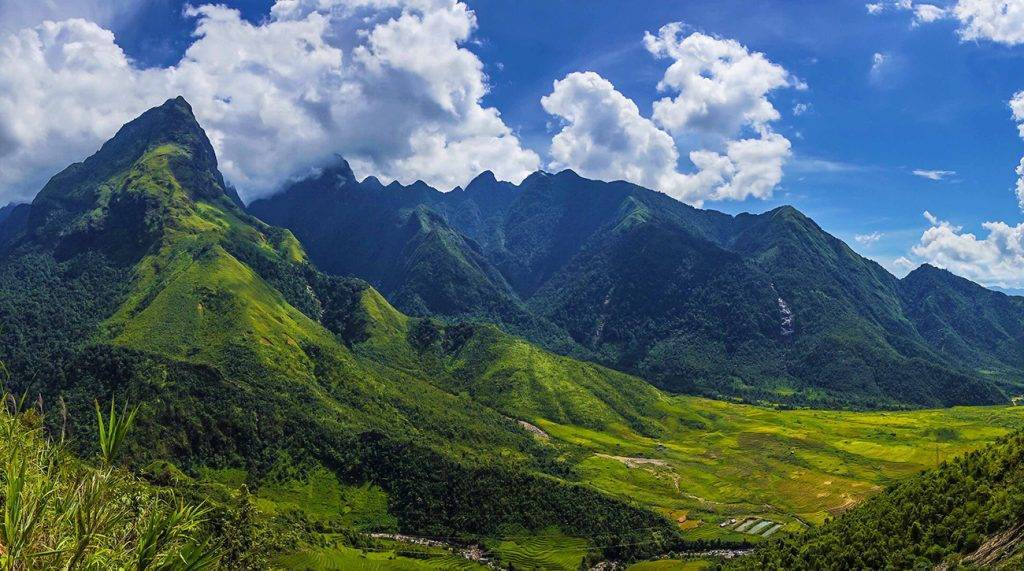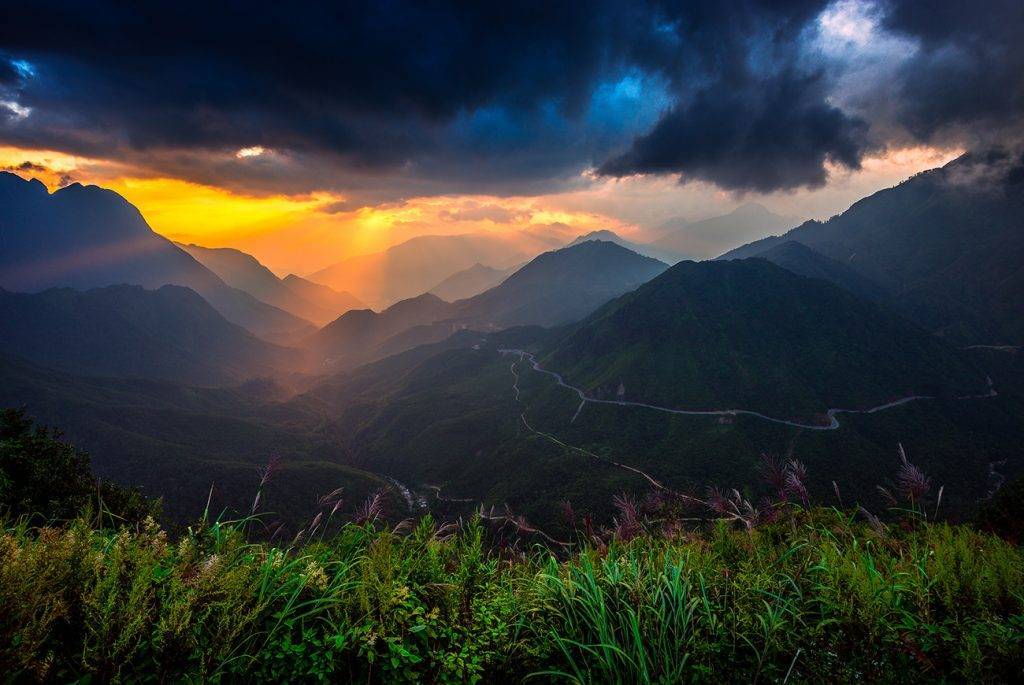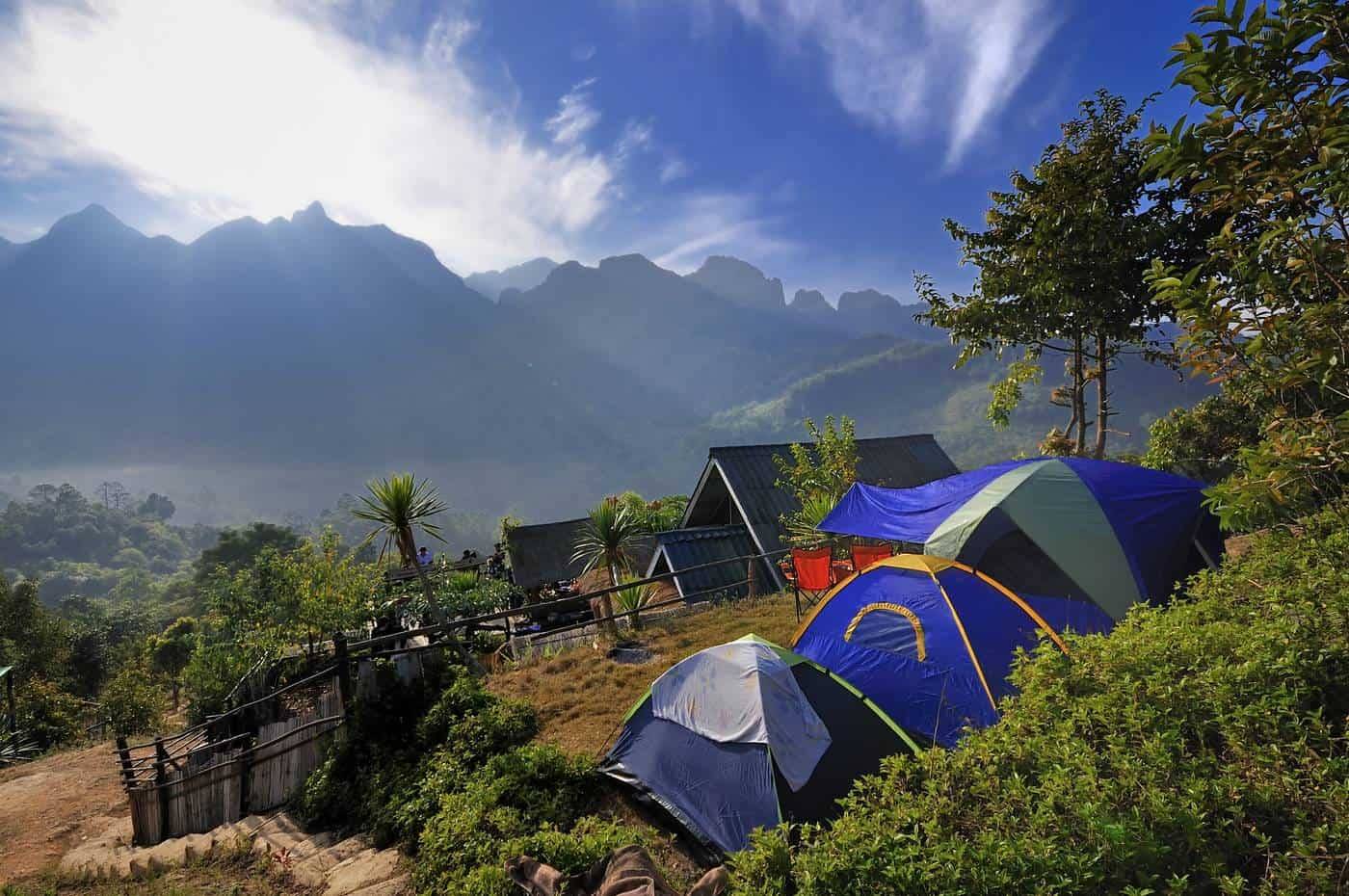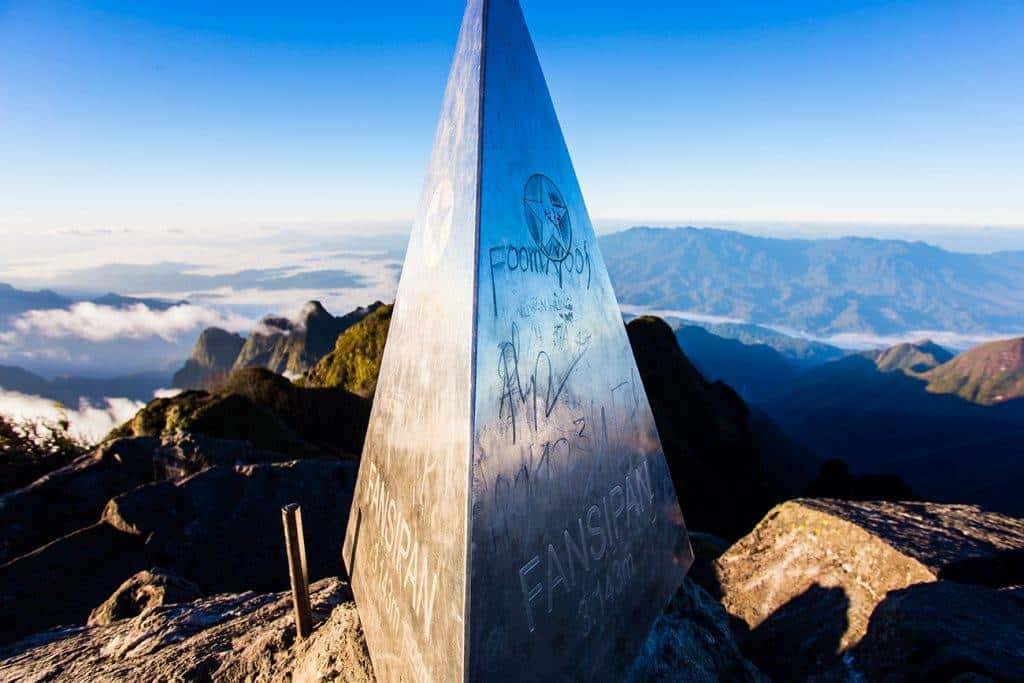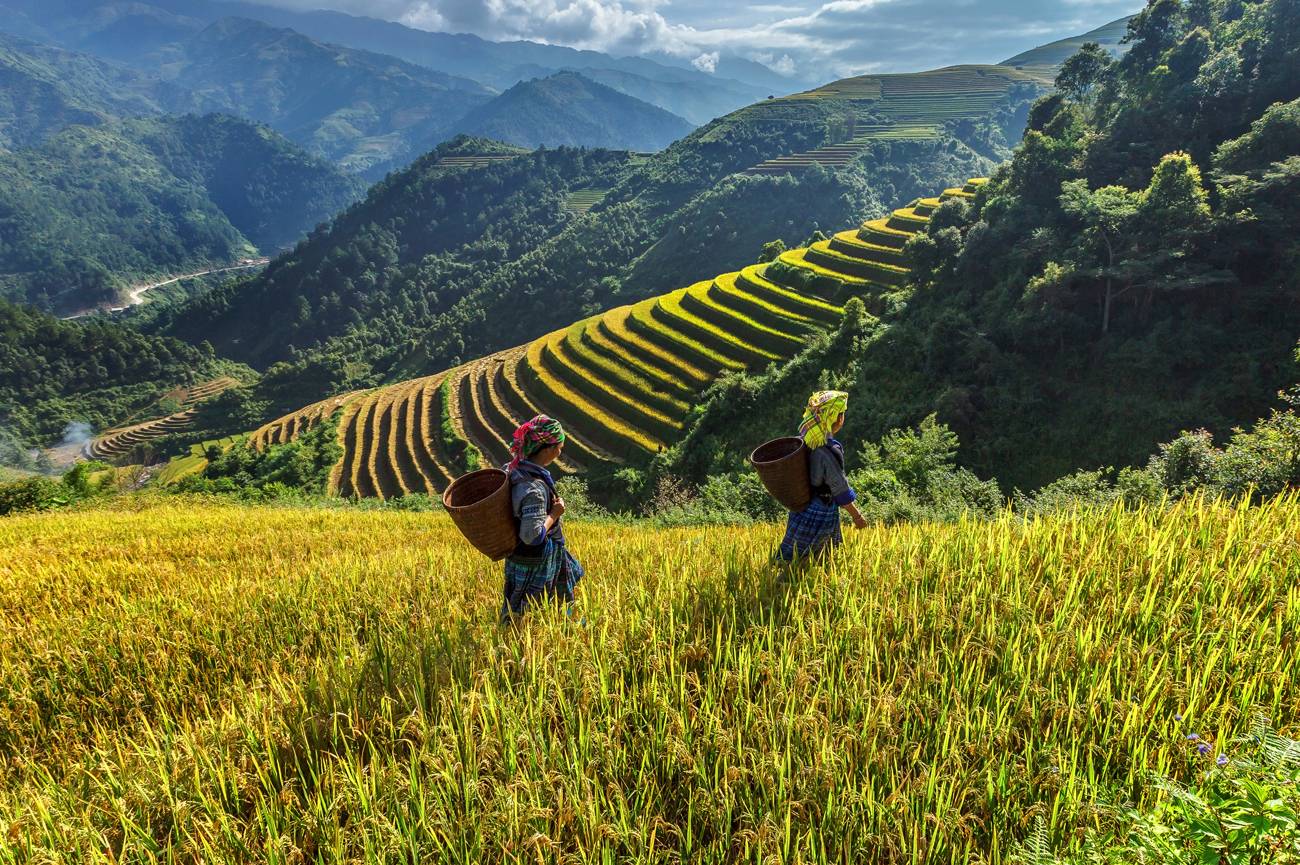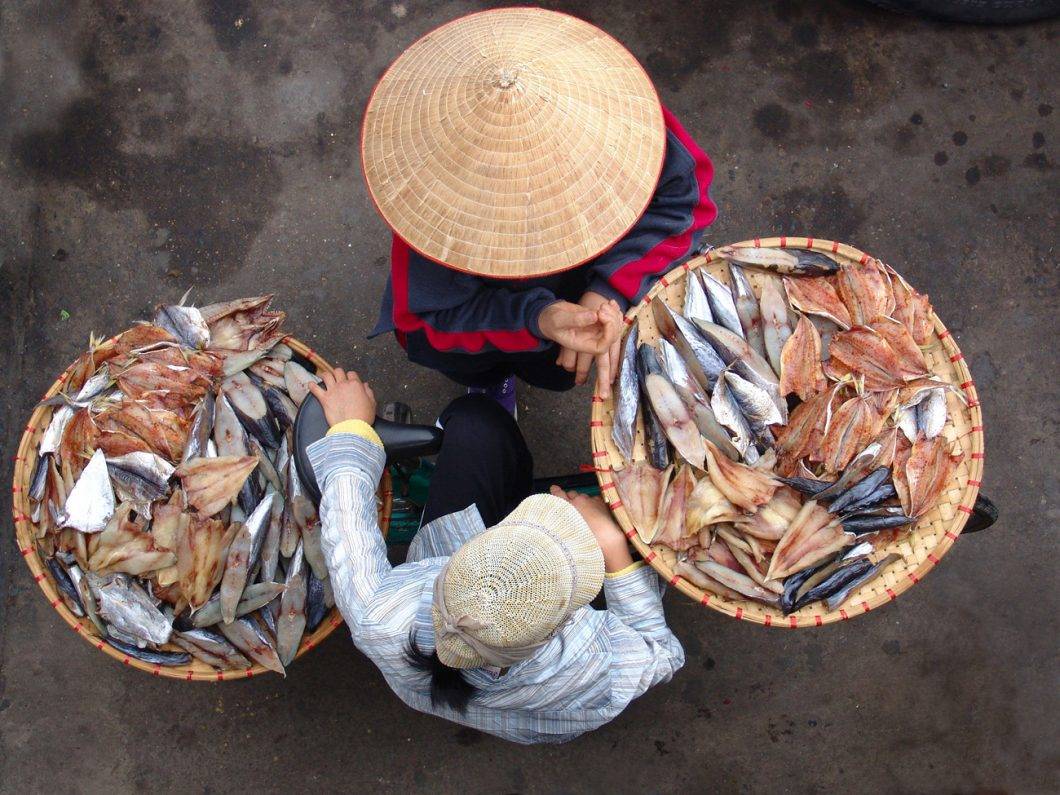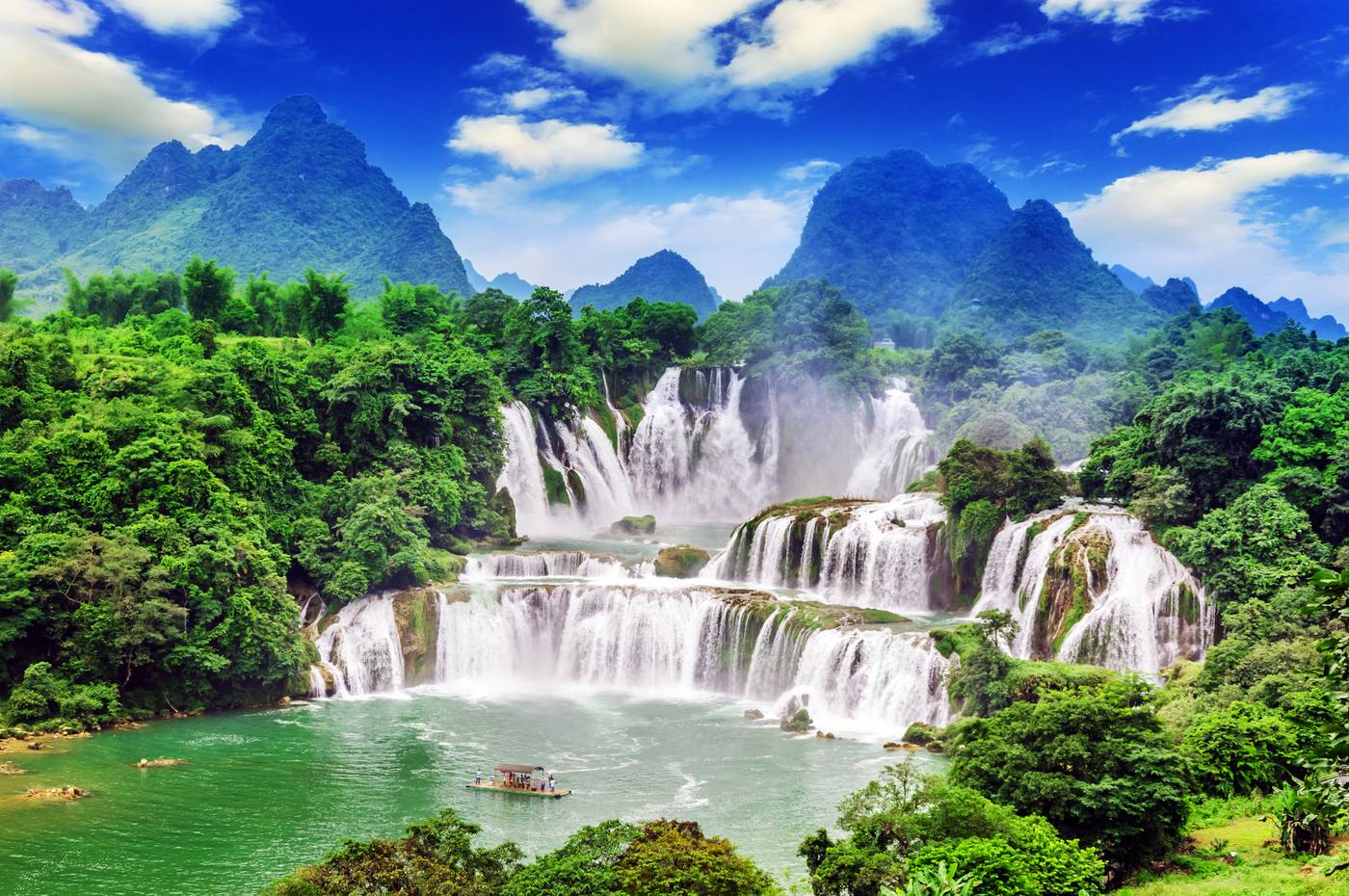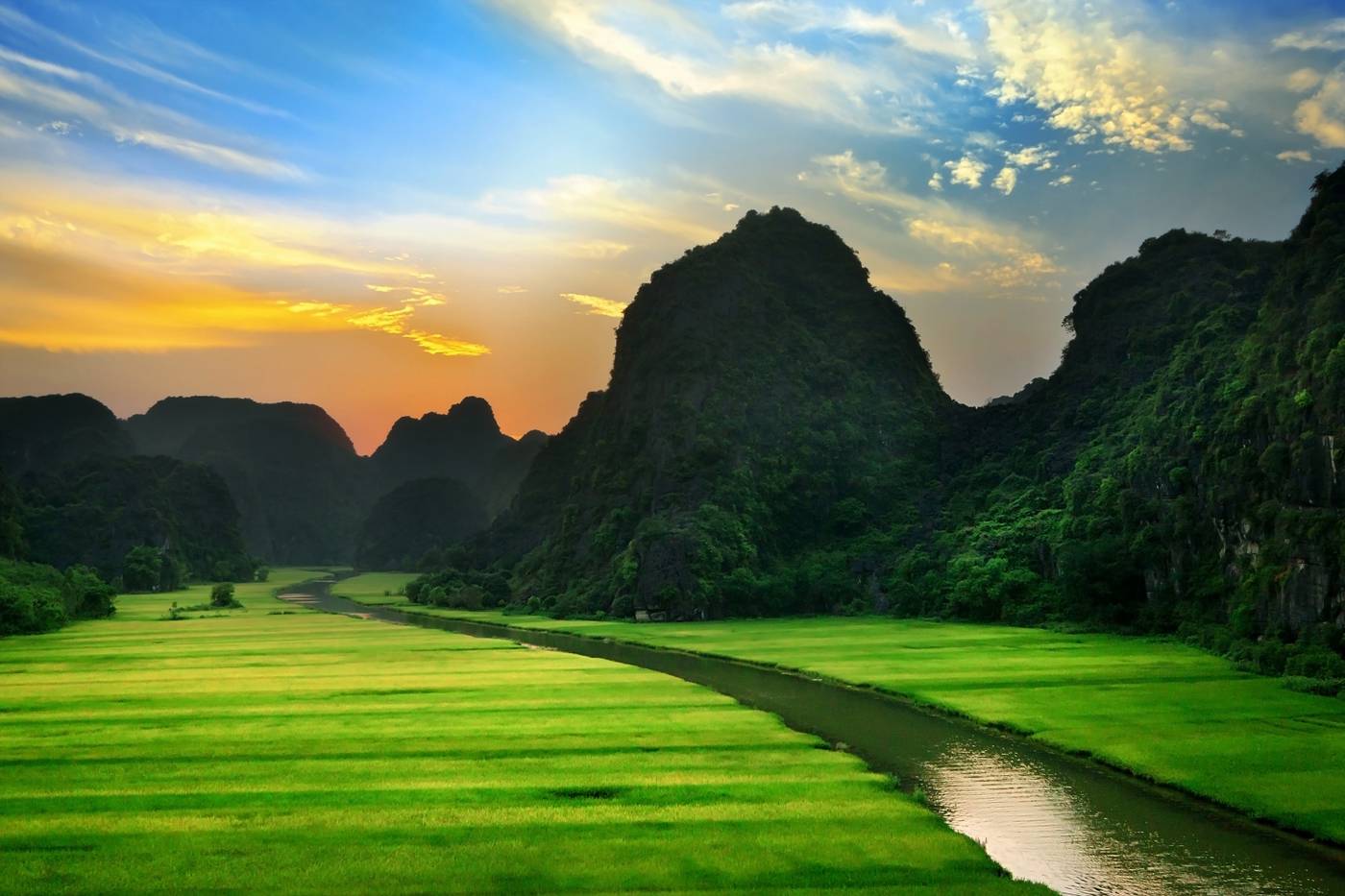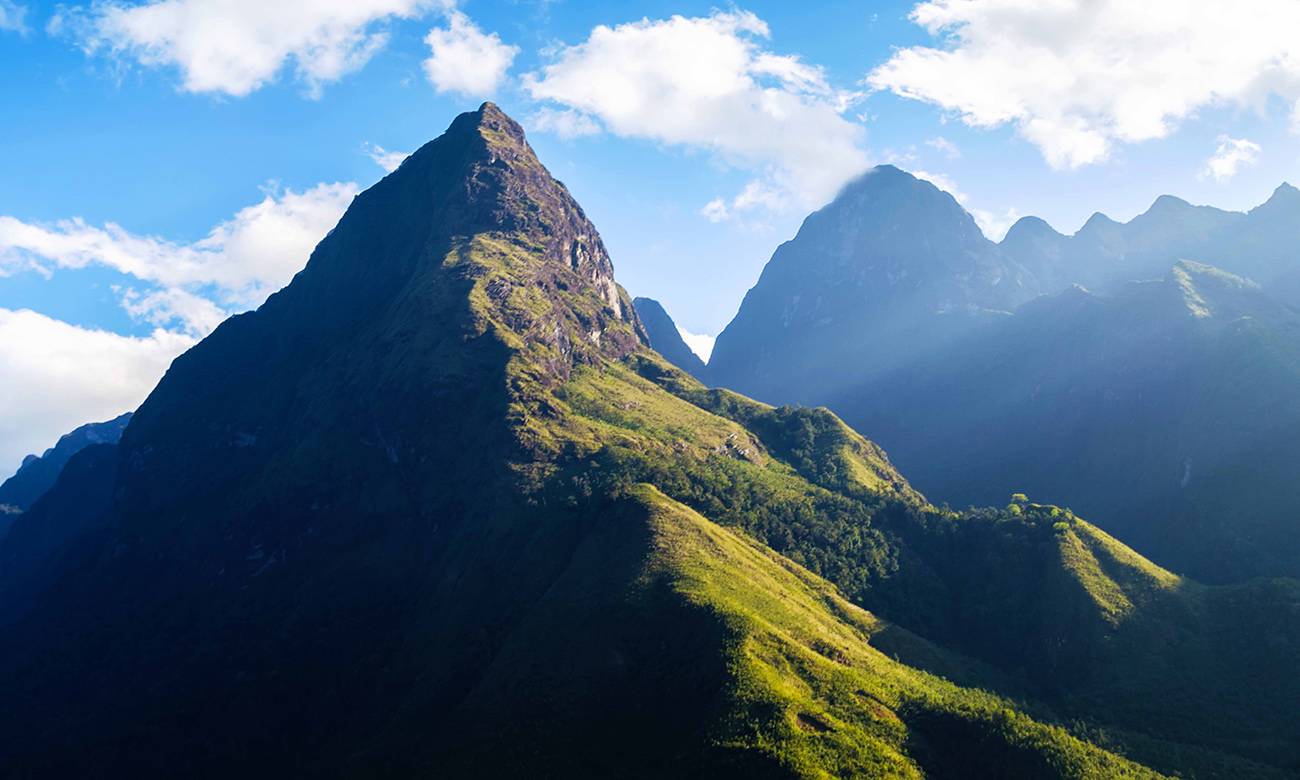
TREKKING MOUNT FANSIPAN – THE ROOF OF INDOCHINA
Fan Xi Pan (Mount Fansipan) is Vietnam`s highest peak, and at 3143 m it carries a nickname the “Roof of Indochina.” Rising dramatically above the rest of the Hoang Lien Son mountain range and lording over the picturesque lake village of Sa Pa, Fansipan is a tempting eminence to conquer indeed.
FANSIPAN HIKING RATHER THAN A CABLE CAR
The Fansipan nature reserve is one of the most stunning destinations in Vietnam, for both eco-tourism and scenery. The area is well-known for numerous distinctive ethnic groups that still live in a traditional way of life.
Setting out on an uphill-journey via beautiful Muong Hoa Valley (instead of taking a 20-min ride directly to the summit) will give you a great opportunity to interact with the native hill-tribes while enjoying staggering landscapes and keeping yourself fit. Besides, this is a perfect way to avoid crowds waiting for the cable car!
FANSIPAN TREKKING
It takes 1-3 challenging days (depending on the route you choose) to tackle the summit of Fansipan, and those who decide to get up the peak on foot will be rewarded with breathtaking views reaching as far as the peaks of Yunnan in China.
The actual trek begins in the Mong Hoa Valley, at the altitude of 1000 m, and you will be hiking 1-3 days/up to 8 hours a day, which requires a good deal of endurance and a certain level of fitness. This is going to be a wonderful trip, taking you through deep valleys and gorgeous waterfalls, bamboo groves, ancient pine forest and thick jungle of the Hoang Lien Son Mountains.
INDEPENDENT OR GUIDED HIKING?
Mount Fansipan can be climbed independently (fit and experienced hikers ONLY). However, do not expect well-maintained and perfectly-marked walking tracks. There is a campground on the way with relatively basic facilities available, and everyone will need to carry their own camping and trekking equipment. If you are not 100% confident, you are recommended to hire a local guide/porter in Sa Pa.
Nevertheless, most of the visitors prefer to join an organized guided group expedition, having provided all essentials – guides, cooks and even porters who will help with carrying the backpacks, water, and food. Sa Pa is the base for Fansipan trekking and the place where you can arrange your trip (at your guesthouse, hotel or one of the local travel agencies).
Find out more at: travelmarbles.com/australia/#1465102454522-e3765fbd-1d07
WHICH HIKING TRACK TO CHOOSE?
There are 3 different possible routes to the summit:
- Start in Tram Nom –this pretty gradual trek was made to serve any tourist and it is commonly used by the guided tours. It is doable within one day only, which makes it be the shortest one and suitable for anybody.
- Start in Sin Chai– the steepest and the most difficult hike (2 days). Only experienced climbers are recommended for this route, and they might need some ropes and other equipment on this one. Also, take enough food supplies and appropriate camping gear.
- Start in Cat Cat– the longest but probably the most scenic climb (3 days). There is a small camp at 2200 m where you will spend the first night and another one at 2700 m for the second night. Even some simple meals cooked on the open fire are available here to the climber’s comfort.
NOTE
If you are an inexperienced hiker, you should book a guided tour. There is a wide array of travel agencies in Sa Pa available. Fansipan trekking tours offer all-inclusive tour packages (price range from $100 to $150USD)
Sun World Fansipan Legend Cable Car has been operating since 2016 from Sa Pa to the summit of Fansipan. Take a taxi to the Fansipan Legend station (3 km from the Sa Pa town centre) or walk to enjoy the scenery. The 20 min ride costs around $35USD, and it will take you to the peak. There is a Chinese Temple on the summit station, as well.
TRAVEL TIPS
The altitude and climate in this part of Vietnam might be a bit of an issue even for advanced mountaineers. Hence every climber is recommended to arrive in Sa Pa a few days prior to the hike to acclimatize. Trekking in the surrounding mountains before you hit the steep slopes of Fansipan will also be beneficial.
Although Sa Pa is a fairly warm place and you might seem like you won`t need many warm clothes the higher altitudes get pretty chilly nights – you will need good shoes and warm clothing for sure.
Remember to take a raincoat – it frequently rains in the area even in the driest season of a year, and the track often gets muddy!
You will meet various ethnic minorities in the Mong Hoa Valley and around the rice fields, e.g., Hmong and Dao. Although they have got used to the Westerners, it is good to be polite and ask for permission to take photographs.
WHEN TO TRAVEL
Fansipan is accessible year-around but the best time to go is probably from October to April, when the chances of clearer skies increase together with better visibility.
HOW TO GET THERE
Fly to Hanoi and take a tourist train to Sa Pa.
Optionally, you can catch a reasonably cheaper shuttle bus from Hanoi to Lao Cai and change for a bus to Sa Pa – the starting point for Fansipan trekking. (Most of the guesthouses and hotels in Hanoi will be more than happy to organize transport for you).
For all international flights check out www.skyscanner.com or www.momondo.com
